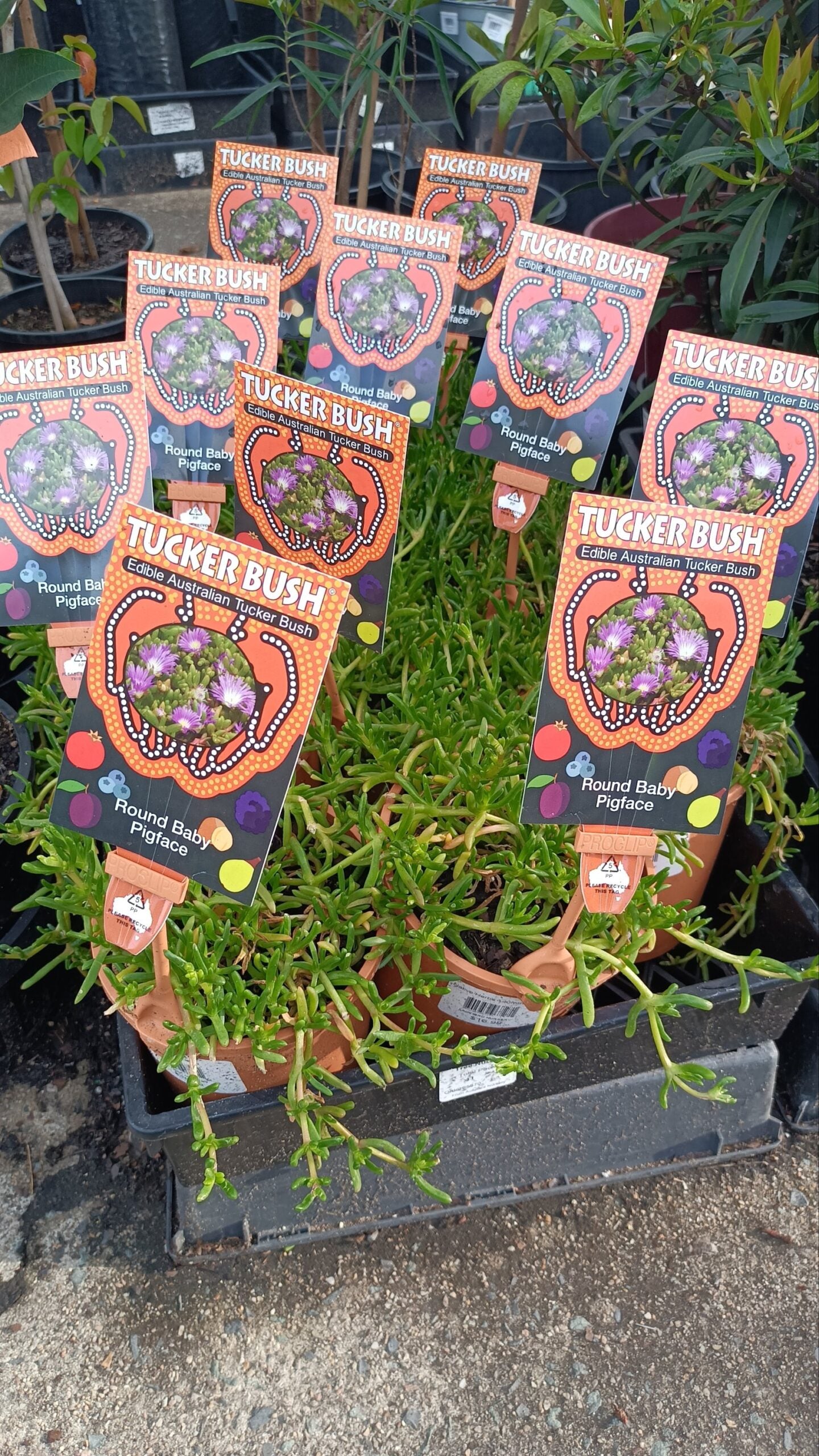


1
/
of
2
Ladybird Nursery
Tucker bush Round baby pig face (Disphyma crassifolium ssp. clavellatum)
Tucker bush Round baby pig face (Disphyma crassifolium ssp. clavellatum)
Regular price
$16.99
Regular price
Sale price
$16.99
Taxes included.
Shipping calculated at checkout.
The Tucker Bush Round Baby Pig Face (Disphyma crassifolium ssp. clavellatum) is a low-growing succulent commonly found along the coastal areas of Australia. It’s well-known for its vibrant flowers and its use in bush tucker (native Australian edible plants). Here’s a detailed overview of the plant:
Botanical Information:
- Scientific Name: Disphyma crassifolium ssp. clavellatum
- Common Name: Round Baby Pig Face, Noon Flower
- Family: Aizoaceae
- Origin: Native to coastal regions of southern Australia, New Zealand, and South Africa.
Physical Characteristics:
- Flower Color: Bright pink to purple, occasionally white, with daisy-like flowers.
- Flowering Season: Blooms in spring and summer, with long-lasting and profuse flowers.
- Plant Height: Forms a low-growing mat, typically 10–20 cm tall.
- Spread: Can spread up to 1 meter wide, making it an excellent ground cover.
- Leaves: Succulent, fleshy, and cylindrical, typically rounded at the tips, which gives the plant its common name ""Baby Pig Face.""
Growth and Care Requirements:
- Light: Prefers full sun for optimal growth but can tolerate light shade.
- Soil: Adaptable to a wide range of soils, particularly sandy and well-drained soils. It thrives in poor, coastal soils and can tolerate saline environments.
- Water: Drought-tolerant once established but prefers occasional watering. Avoid overwatering to prevent root rot.
- Temperature: Hardy to a variety of climates but thrives best in warm, temperate zones. Tolerates coastal winds and saline spray.
- Fertilization: Requires minimal feeding; a light application of a balanced, low-nitrogen fertilizer in spring can promote growth.
- Maintenance: Low-maintenance plant, prune to control spread if needed. Remove dead flowers to encourage continuous blooming.
Edibility and Uses:
- Bush Tucker: The leaves and fruits are edible. The succulent leaves have a salty flavor and can be eaten raw or used in salads. The small, round fruits are also edible and have a tangy taste.
- Landscaping: Ideal as a ground cover in rockeries, coastal gardens, or as a decorative plant in containers. Its trailing habit makes it excellent for erosion control.
- Container Gardening: Can be grown in pots or hanging baskets, where it trails over the edges.
Pests/Diseases:
- Common Pests: Relatively pest-resistant but can occasionally attract aphids or mealybugs.
- Diseases: Susceptible to root rot if overwatered or grown in poorly drained soil.
Additional Information:
- Propagation: Easily propagated from stem cuttings or division of clumps. Cuttings root readily in sandy soil.
- Longevity: Long-lived and thrives in poor soils, making it an excellent choice for sustainable and low-maintenance gardens.
Quantity
Couldn't load pickup availability



